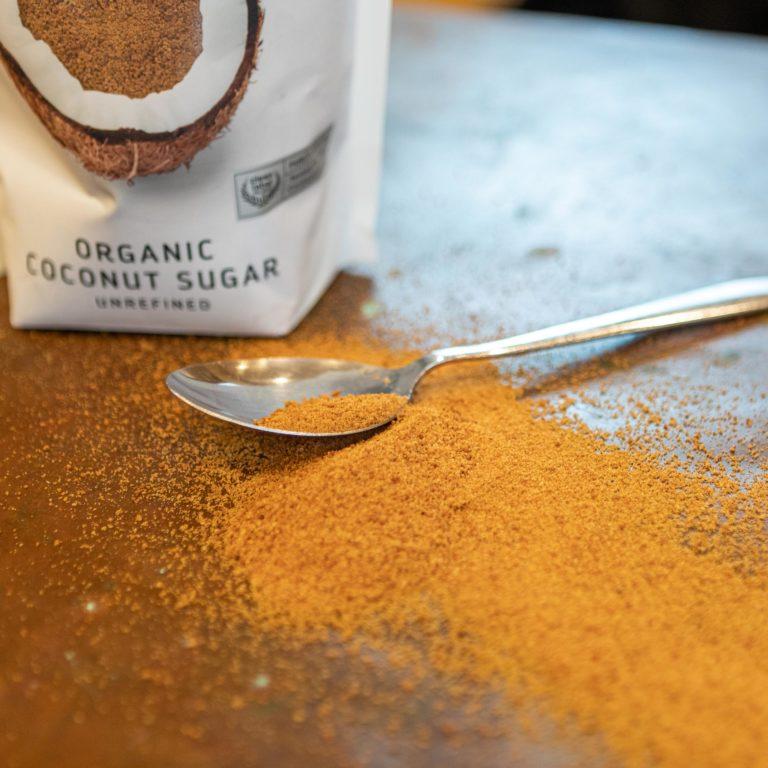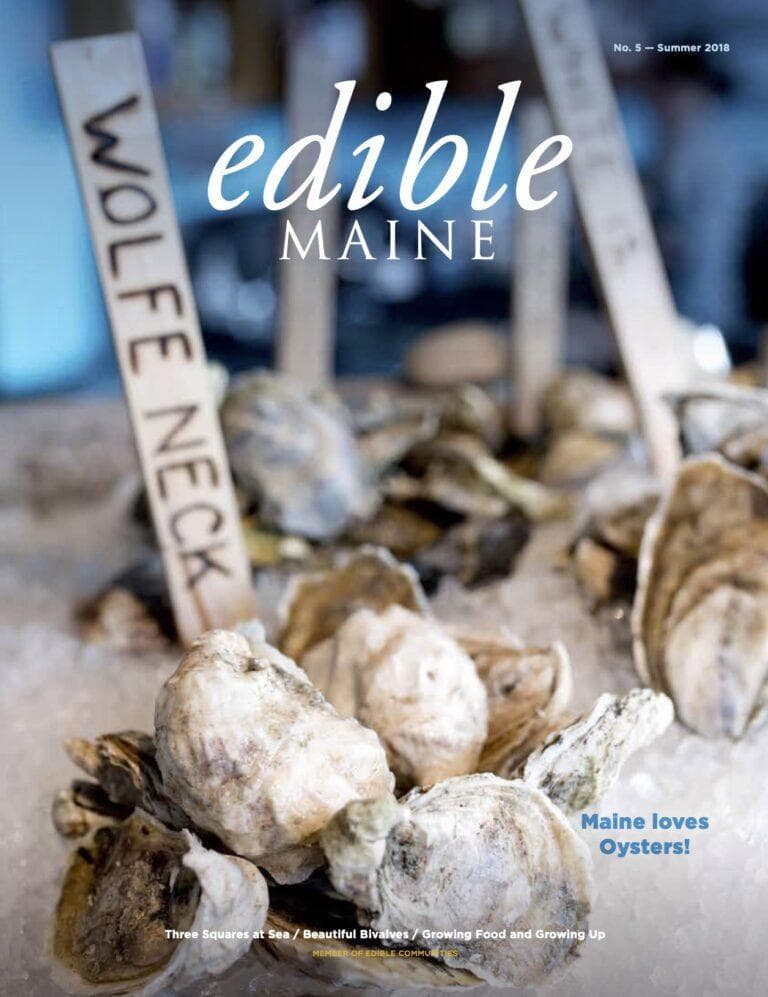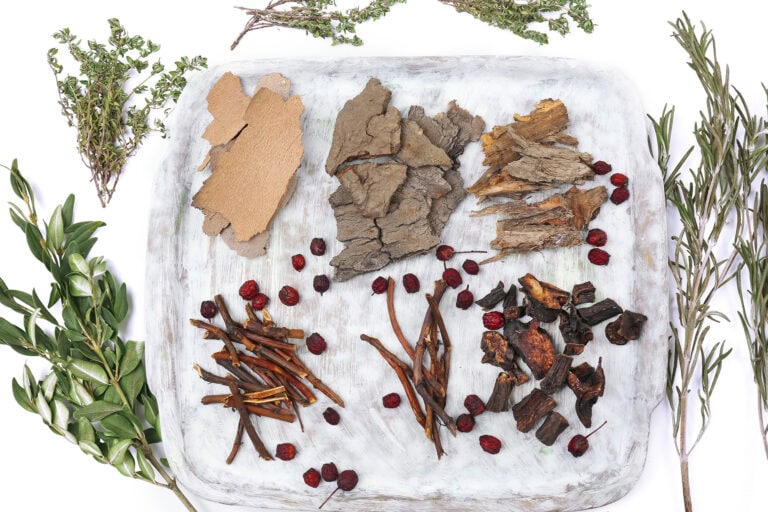Waste not, want not. It’s a basic tenet for sourcing, cooking, and eating sustainably. Here, the edible MAINE staff serves up ways to use up any special ingredients the recipes in this issue may have brought into your kitchen.
BONITO FLAKES
Bonito flakes, also called katsuobushi, are small pieces of dried, fermented tuna. A staple in Japanese cooking, they have a smoky, slightly fishy flavor and can be found in any Asian grocery store. The easiest way to use them is to grind them with a mortar and pestle and sprinkle them over steamed vegetables, tofu, rice, or soba noodles as they instantly add a boost of umami.
CAULIFLOWER WITH BONITO FLAKE SAUCE
Combine 2 tablespoons bonito flakes, 1 tablespoon each of sesame oil and mirin, and ¼ teaspoon of cayenne pepper in a small saucepan. Bring to a boil over medium heat and immediately turn off the heat. Stir in 1 tablespoon lemon juice and set aside. In a medium saucepan, combine 2 cups water and 1 teaspoon salt. Place pan over high heat and add 2 cups bite-sized pieces of cauliflower into the pan when the water boils. Cook for 2 minutes, then drain. Garnish with toasted sesame seeds, chopped scallions, and bonito sauce.
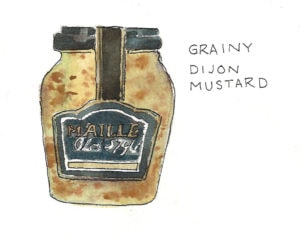
GRAINY DIJON MUSTARD
Made from brown, black, and yellow mustard seeds and white wine, ground together just enough to form a paste, this condiment packs quite a flavor punch, one that clears your sinuses like horseradish. You can certainly spread it on a ham and cheese sandwich, but it’s also a great flavor and texture booster for creamy sauces or salad dressings that call for mustard.
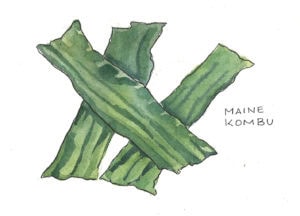
KOMBU
Kombu is dried kelp widely known for the umami it imparts to any liquid it’s soaked in. Several Maine-based companies harvest kelp and sell kombu, including Atlantic Holdfast Seaweed Company, Ironbound Island Seaweed, Heritage Seaweed, Maine Coast Sea Vegetables, and Ocean’s Balance. Toss a piece of kombu in simmering pots of beans, rice, seafood stew, and vegetable stock. And after it’s simmered in the pot for an hour, cut it into strips and add it to salads.
MIRIN
Mirin is a subtly sweet, slightly tangy rice wine that is the key to many homemade Japanese dishes—teriyaki, poke, stir-fried udon noodles, and ramen. It is like sake but has more sugar and less alcohol content. Asian groceries are the best bet for finding true mirin, but your local Hannaford likely carries Kikkoman “aji-mirin,” which literally means “tastes like mirin” and contains more added sugars. A western substitute for mirin is an equal amount of dry sherry or sweet marsala wine.
MAINE GRAINS RYE FLOUR
This whole-grain flour is stone-milled in Skowhegan from rye grown by local farmers. Low in gluten, rich in fiber, and nutty, earthy, and slightly malty in flavor, it is typically used in aromatic breads like pumpernickel and vollkornbrot and in hearty crackers. Like whole-wheat flour, you can substitute up to half of the all-purpose (AP) flour called for in most recipes to get its flavor without throwing the texture of the finished baked good too far off.
CINNAMON RYE SHORTBREAD
Beat 1 cup butter, ¾ cup confectioners’ sugar, and 1 teaspoon vanilla until creamy. Add 1 ½ cups AP flour, 1 cup rye flour, 1 ½ teaspoons cardamom, and ½ teaspoon salt. Beat until clumps form. Transfer dough to a buttered 9-inch round pan. Press it into an even layer and score it to make 24 wedges. Dock each wedge twice with a fork. Sprinkle 1 tablespoon raw sugar over dough. Bake at 350° until lightly browned all over, 30–35 minutes. While shortbread is hot in the pan, cut along scored lines. Cool before removing from pan and gently breaking wedges apart.
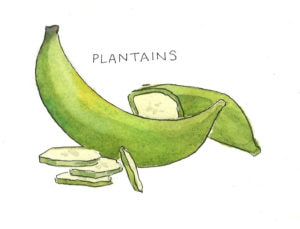
GREEN PLANTAINS
Green plantains are unripe plantains. They have rigid green skins that need to be scored and torn off in strips. The fruit is more the texture and taste of raw potatoes than the bananas they resemble in shape. Green plantains can be grated to make fritters or cut into bite-size pieces and added to soup, where their natural starch will thicken the broth.








